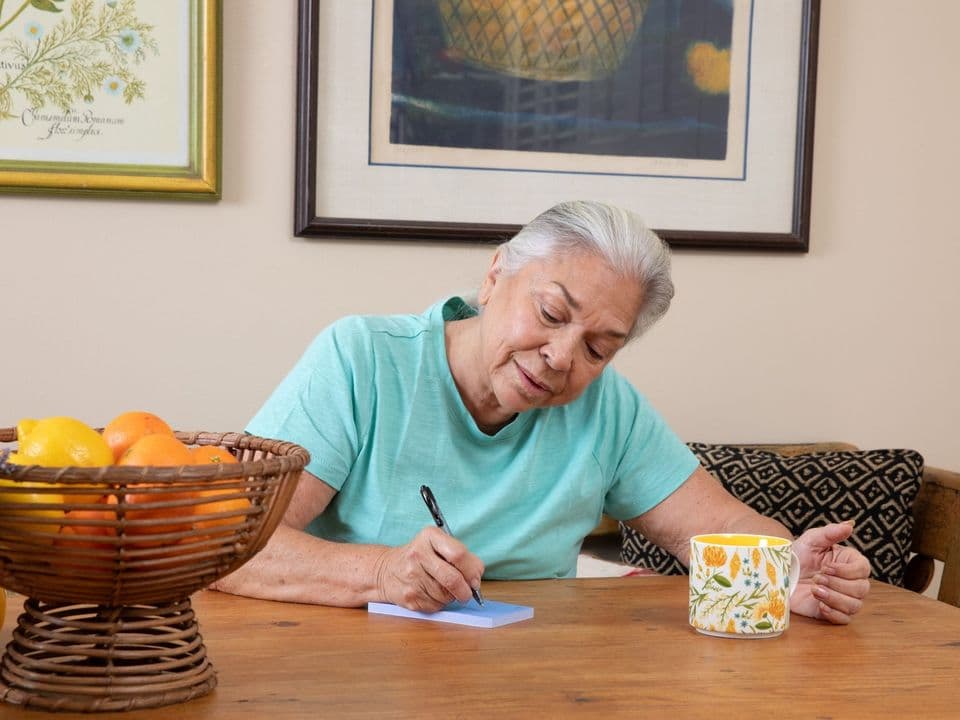Bold Guide: Exercise for pain management
Learn how Bold’s online exercise classes help older adults reduce pain and regain control.
Pain is personal. It can take a toll on our physical and mental health, and show up differently every day. Many people with chronic pain suffer in silence, accepting it as a fact of life. According to the CDC, over 50 million adults experience chronic pain, and older adults are at higher risk. At Bold, we empower older adults to take action to improve their pain, instead of ‘just dealing with it.’ Regular exercise, made easy with Bold, can help us lead healthier, happier lives as we age.
What are the different types of pain?
In order to manage pain, it’s important to understand the different causes and types.
According to the NIH, pain generally falls into two categories:
- Acute pain: Lasts less than 3 months (caused by things like broken bones or tooth extraction)
- Chronic pain: Persists for more than 3 months
If you have chronic pain, you may have one of these types:
- Neuropathic pain: Nerve pain due to damage or dysfunction in the nervous system
- Nociceptive pain: Caused by tissue damage (e.g., fractures, arthritis)
- Psychogenic pain: Physical pain influenced by mental or emotional factors
Chronic pain is complex and often results from multiple factors accumulating over time, including:
- Muscle weakness
- Chronic conditions (e.g., diabetes, heart disease)
- Poor sleep or nutrition
How exercise helps with chronic pain
Though it may seem counterintuitive, exercise plays a crucial role in managing the different factors that contribute to pain.
Research shows that regular exercise can help:
- Increase strength and flexibility
- Decrease inflammation and fatigue
- Improve mood and energy levels
- Release endorphins, or natural pain-relieving hormones
The best exercises for pain management are those you can do safely and consistently. For some people with chronic pain, gentle movements like Tai Chi or yoga are just right. Others may enjoy strength training, dance, or Pilates. From balance to cardio, Bold offers thousands of classes for you to choose from, so you can find what works best for you.
What to do if you feel pain during exercise
Exercise often involves making our muscles and joints work harder than they do in day-to-day life. This means that some soreness can be expected after exercise, and can persist for a couple of days after a challenging Bold class.
As you get more experience and develop your routine, this kind of soreness should become less common and less intense. Soreness after exercise can be a good sign that you’re working hard enough to see improvement over time.
Pain that results from injury is often more intense, localized to a specific area, and can cause us to move this area less. If you feel unfamiliar or sharp pain that lasts for 2 or more days, it is important to take note and potentially pause your exercise routine, or try a lighter intensity exercise like yoga, or Tai Chi. You should always consult with your doctor if you are concerned something more serious has occurred. Staying hydrated, getting proper sleep, and eating well are all great ways to stave off injury and to start each class at your best.
Helping you to avoid injury during exercise is one of Bold’s most important roles. Our trainers take the time to guide you on proper technique and often offer modifications, or movements that may stress the body less intensely but work similar muscles. Like pain, exercise is personal, too. Modifications are just as valid as the movements they replace if they help you build strength and confidence in the way that works best for you.
Tips to start an exercise routine with chronic pain
- Consult your healthcare provider before starting
- Warm up before exercising to improve blood flow and get ready to move
- Start slow and build up gradually, like by taking a 10-15 minute Bold class 2-3 times a week
- Be patient with your progress, and learn from your setbacks
- Try different types of exercise to find what you enjoy
The bottom line
Exercise is a powerful tool for managing chronic pain. At Bold, this is top of mind – 61% of our members experience a reduction in pain after 6 weeks in their Bold exercise program. With patience and consistency, you too can reduce your pain and improve your quality of life. Check if you’re eligible for Bold at no cost through your health plan or provider, and get moving today.
Sources
- CDC - Morbidity & Mortality Weekly Report
- NIH - National Library of Medicine
- Cochrane Library
More from Bold
Physical activity for seniors: Benefits, guidelines, and how to start safely
Discover the benefits of physical activity for seniors, including CDC guidelines, safety tips, and how to start exercising at any age.
Better sleep for seniors: 8 simple habits to improve sleep quality
Discover 8 simple habits to improve sleep for seniors. Learn why sleep is important for older adults, how aging affects rest, and practical tips to boost sleep quality, brain health, and overall well-being.
Nutrition for seniors: Your guide to healthy eating as you age
Why is nutrition important for seniors? As we get older, our bodies naturally go through changes that can affect everything from strength and mobility to memory, sleep, and digestion. Changes in our bodies can affect how we use and absorb nutrients,



